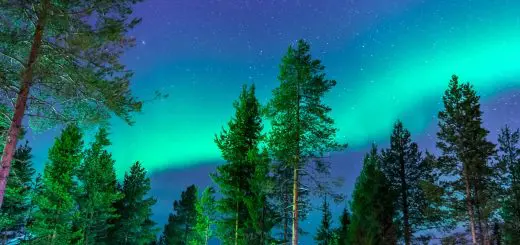How Large Is Spain? Find Out Now

Looking for more amazing products? Check out our online store and explore our collection here! Happy shopping!
Before diving in, please note: This post is for informational purposes only. If you’d like to know more about how we approach topics, feel free to check out our friendly Disclaimer Page.
Hey there, amazing readers! 
We’re committed to delivering quality posts, and your support (even just sticking around despite the ads) means everything to us. So, bear with us, and thanks for helping us keep the good vibes rolling. Now, on to the fun stuff!
TRANSLATE BUTTON AT THE END OF THE ARTICLE
A Quick Overview
When we think about Spain, we often picture vibrant flamenco dances, delicious tapas, and stunning architecture.
But how large is Spain?
It might surprise you to learn that this captivating country is not only rich in culture but also impressive in size.
Covering a significant portion of southwestern Europe, Spain has a land area that offers diverse landscapes, climates, and communities.
Let’s dive deeper into Spain’s dimensions, geography, and what makes its size so fascinating!
Understanding Spain: A Quick Overview of Its Size
Spain covers an impressive land area of approximately 505,990 square kilometers (195,364 square miles).
It’s the fourth largest country in Europe and the second largest in Western Europe, trailing only France.
Its size is equivalent to about twice the size of the U.K. or slightly larger than Texas, which gives you an idea of how extensive the terrain really is.
The sheer size of Spain is remarkable, considering it encompasses a vast variety of landscapes.
From the beaches of the Mediterranean coast to the mountains of the Pyrenees, Spain’s geographical diversity is staggering.
This variety leads to rich ecosystems and a wealth of natural resources.
When we talk about size, we also consider the territories that Spain controls.
Apart from the mainland, Spain includes several islands, such as the Balearic Islands in the Mediterranean and the Canary Islands off the northwest coast of Africa.
These islands contribute to Spain’s overall land area and showcase its geographical diversity.
Spain’s dimensions also mean that it has various climatic regions.
The Mediterranean climate predominates along the coast, while the interior experiences a more continental climate.
In contrast, the northern regions, such as Galicia, enjoy a more oceanic climate.
It’s fascinating how the size of a country can directly influence its weather patterns.
Spain’s Geographic Location: Where Is It Situated?
Spain is located in southwestern Europe, occupying most of the Iberian Peninsula.
It shares land borders with just two countries: Portugal to the west and France to the northeast.
The small principality of Andorra is nestled in the Pyrenees mountains between Spain and France.
To the south, Spain faces the Mediterranean Sea, while to the north, it has coastlines along the Bay of Biscay.
The Balearic Islands sit in the Mediterranean Sea, and the Canary Islands lie in the Atlantic Ocean, off the northwestern coast of Africa.
This strategic geographical position links Spain to Africa and Europe, making it a cultural crossroads.
Spain’s location also influences trade routes.
Its well-established ports facilitate transport and commerce between Europe, Africa, and the Americas.
Historically, Spain’s coastal cities have been vital in maritime exploration and trade.
In terms of transportation, Spain’s geography has resulted in a well-developed network of roads and highways, making it easy to traverse the country.
The high-speed trains (AVE) connect major cities in record time, showcasing how location and size interact to enhance travel experiences.
Comparing Spain’s Size to Other European Countries
When comparing Spain’s size to other European countries, it ranks as one of the largest.
Here’s a quick rundown:
France: The largest country in Europe at around 551,695 square kilometers.
Ukraine: Slightly larger than Spain, with an area of about 603,500 square kilometers.
Germany: A bit smaller, covering around 357,022 square kilometers.
Italy: Smaller still, at approximately 301,340 square kilometers.
In the grand scheme of Europe, Spain occupies a significant chunk of land, making it a powerhouse in terms of geography and resources.
Despite being the fourth largest, its cultural impact and influence often overshadow its physical size.
Spain’s size has allowed it to accommodate a population of approximately 47 million people.
This makes it one of the most populous countries in Europe, leading to a rich cultural tapestry that is as diverse as its landscapes.
Exploring Spain’s Total Land Area: Key Figures Revealed
Let’s break down Spain’s land area even further:
Total land area: 505,990 square kilometers (195,364 square miles)
Length from north to south: Approximately 1,000 kilometers (620 miles).
Width from east to west: Roughly 1,000 kilometers (620 miles) as well.
The size of Spain gives room for a range of ecosystems, from Mediterranean forests to the arid landscapes of Almería in the southeast.
Not only does Spain cover a large surface area, but it also has several mountain ranges.
The Pyrenees, Sierra Nevada, and the Cordillera Cantábrica are just a few examples.
These mountains contribute to varied climates and ecosystems across the country.
Spain’s size also provides ample coastlines totaling around 4,964 kilometers (3,106 miles), making it a haven for beach lovers and watersport enthusiasts.
Discovering the Regions of Spain: A Diverse Landscape
Spain is divided into 17 autonomous communities and two autonomous cities, each with its distinct identity, culture, and geography.
Here are a few notable regions:
Andalusia: Known for flamenco and beautiful beaches, it’s the largest region by area.
Catalonia: Home to Barcelona, it has its own distinct language and culture.
Basque Country: Notable for its unique language, gastronomy, and mountainous terrain.
Galicia: Known for its lush landscapes and rugged coastline, it has a Celtic influence.
Each region reflects Spain’s rich cultural diversity.
The sheer size of the country accommodates a variety of traditions, languages, and culinary delights.
Moreover, the regions are connected through an extensive transportation network, allowing locals and tourists to explore this vast landscape with ease.
How Spain’s Size Affects Its Climate and Weather Patterns
Spain’s size significantly impacts its climate and weather conditions.
The country experiences diverse climates, which can vary dramatically from one region to another.
For example:
Mediterranean Climate: Along the eastern and southern coasts, you’ll find hot, dry summers and mild winters, perfect for growing olives and grapes.
Oceanic Climate: In the north, particularly in Galicia and Asturias, the weather is cooler and wetter, providing lush greenery and biodiversity.
Continental Climate: The interior of Spain, including regions like Madrid, experiences more extreme temperatures, with hot summers and cold winters.
The country’s varied geography, including mountains and plains, also creates microclimates.
For instance, the Sierra Nevada mountains can affect weather patterns by creating rain shadows, leading to drier conditions in neighboring regions.
Spain’s climatic diversity influences agricultural production, tourism, and outdoor activities.
From skiing in the Pyrenees to sunbathing on the Mediterranean beaches, the size and geography of Spain allow for year-round activities.
The Population of Spain: How Many People Live Here?
As of 2023, Spain has a population of around 47 million people.
This makes it one of the most populous countries in Europe.
The large population is spread across various urban and rural areas, with major cities like:
Madrid: The capital and largest city, with over 3 million residents.
Barcelona: Known for its architecture and beaches, home to around 1.6 million people.
Valencia: A coastal city with a population of about 800,000.
Spain’s population density is approximately 93 people per square kilometer, but this varies widely.
Urban areas are densely populated, while rural areas can be much less so.
The cultural and ethnic diversity in Spain is one of its most attractive qualities.
The rich blend of languages, traditions, and customs reflects various historical influences.
This diversity shapes national identity and community interactions.
Spain’s Borders: Who Are Its Neighbors and Allies?
Spain shares land borders with only two countries, which is quite remarkable for a nation of its size:
Portugal: To the west, Portugal is Spain’s only land border.
The two countries share a rich history and cultural ties.
France: Located to the northeast, the border with France is marked by the scenic Pyrenees mountain range.
Additionally, Spain has maritime borders, with the Mediterranean Sea to the south and east and the Atlantic Ocean to the north and west.
Spain’s geographical position also allows it to maintain relationships with North African countries like Morocco.
These borders shape Spain’s international relations and cultural exchanges.
The geographical proximity to Africa has influenced trade, migration, and cultural exchanges, particularly in the southern regions.
Notable Cities in Spain: Size and Significance Explained
Spain boasts several cities that are not only significant in terms of size but also cultural importance:
Madrid: As the capital, it’s the political, economic, and cultural center of Spain.
The city is known for its museums, parks, and vibrant nightlife.
Barcelona: Famous for its unique architecture by Antoni Gaudí, it’s a cosmopolitan city that attracts millions of tourists each year.
Seville: Renowned for its traditional flamenco dancing and the annual Feria de Abril (April Fair), Seville is a cultural gem in Andalusia.
Valencia: This coastal city is known for its arts, science, and delicious paella.
The City of Arts and Sciences is a major highlight.
These cities reflect a blend of history, modernity, and cultural richness, each contributing to Spain’s identity.
Their sizes range dramatically, but each one plays a vital role in the country’s narrative.
Spain’s Natural Wonders: Mountains, Coasts, and More
Spain’s landscape is dotted with natural wonders.
The size of the country allows for various geographical features, including:
The Pyrenees: This mountain range forms a natural border with France and offers stunning scenery and outdoor activities like skiing and hiking.
Sierra Nevada: Home to the highest peak in mainland Spain, Mulhacén, this mountain range is popular among nature lovers.
Beaches: Spain boasts over 4,000 kilometers of coastline, with famous beaches like Costa del Sol and Costa Brava attracting sun-seekers from around the globe.
National Parks: Spain is home to numerous national parks, such as Picos de Europa and Doñana National Park, showcasing diverse ecosystems and wildlife.
These natural features are not just beautiful; they contribute to Spain’s economy through tourism, agriculture, and outdoor recreation.
Fun Facts About Spain’s Size and Geography
Here are some fun nuggets about Spain’s size and geography:
Spain is home to the smallest mountain range in the world, the Cordillera de los Picos de Europa.
The country has more than 8,000 kilometers (about 5,000 miles) of coastline, making it an ideal destination for beach lovers.
Spain has over 1,400 beaches, many of which have been awarded the Blue Flag for cleanliness and safety.
The Camino de Santiago, a famous pilgrimage route, stretches over 800 kilometers (about 500 miles) across northern Spain.
Spain has diverse ecosystems, including wetlands, mountains, and forests, housing a wide variety of wildlife.
These fun facts highlight the incredible diversity and beauty of Spain’s geography.
Each element contributes to the unique character of the country.
Conclusion
Understanding how large Spain is helps us appreciate its rich landscapes, diverse climates, and vibrant cultures.
With its impressive size, Spain is a country that invites exploration and discovery.
From the bustling cities to the serene countryside and stunning coastlines, there’s a bit of everything for everyone.
Whether you’re inspired to travel, learn, or simply soak in the beauty of this remarkable country, Spain’s size plays a vital role in shaping its identity.
So next time you think of Spain, remember that there’s so much more than just tapas and flamenco!

The Enlightenment Journey is a remarkable collection of writings authored by a distinguished group of experts in the fields of spirituality, new age, and esoteric knowledge.
This anthology features a diverse assembly of well-experienced authors who bring their profound insights and credible perspectives to the forefront.
Each contributor possesses a wealth of knowledge and wisdom, making them authorities in their respective domains.
Together, they offer readers a transformative journey into the realms of spiritual growth, self-discovery, and esoteric enlightenment.
The Enlightenment Journey is a testament to the collective expertise of these luminaries, providing readers with a rich tapestry of ideas and information to illuminate their spiritual path.
Our Diverse Expertise
While our primary focus is on spirituality and esotericism, we are equally passionate about exploring a wide range of other topics and niches 

To ensure we provide the most accurate and valuable insights, we collaborate with trusted experts in their respective domains 
Our blog originally focused on spirituality and metaphysics, but we’ve since expanded to cover a wide range of niches. Don’t worry—we continue to publish a lot of articles on spirituality! Frequently visit our blog to explore our diverse content and stay tuned for more insightful reads.
Hey there, amazing reader! 
Check out our store here and take a peek at some of our featured products below! Thanks for being awesome!










